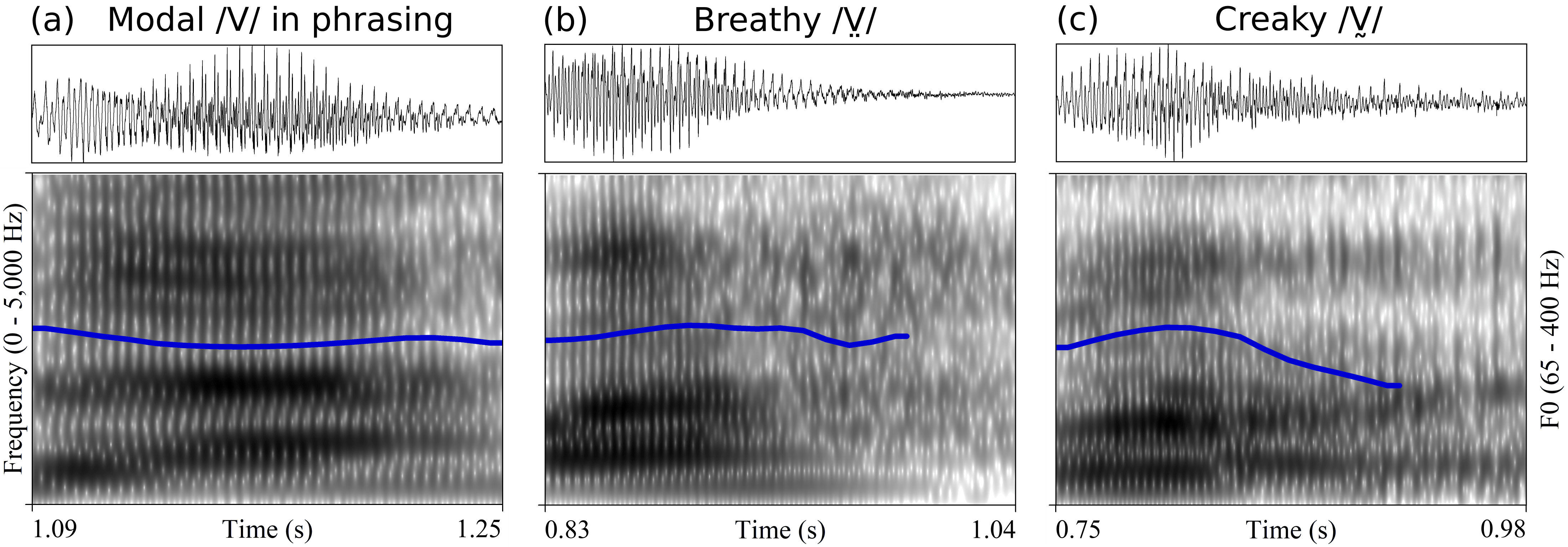Phonation type contrasts and tone in Chichimec
- Published
- Fri, May 01, 2020
- Tags
- rotm
- Contact

Chichimec (Otomanguean) has two tones, high and low, and a phonological three-way phonation contrast: modal /V/, breathy /V̤/ and creaky /V̰/. Tone and phonation type contrasts are used independently. This paper investigates the acoustic realization of modal, breathy and creaky vowels, the timing of phonation in non-modal vowels, and the production of tone in combination with different phonation types. The results of Cepstral Peak Prominence and three spectral tilt measures showed that phonation type contrasts are not distinguished by the same acoustic measures for women and men. In line with expectations for laryngeally complex languages, phonetic modal and non-modal phonation are sequenced in phonological breathy and creaky vowels. With respect to the timing pattern, however, the results show that non-modal phonation is not, as previously reported, mainly located in the middle of the vowel. Non-modal phonation is instead predominantly realized in the second half of phonological breathy and creaky vowels. Tone is distinguished in all three phonation types, and non-modal vowels do not exhibit distinct F0 ranges, except for creaky vowels produced by women, in which F0 declines in the creaky portion. The results of the acoustic analysis provide additional insights to phonological accounts of laryngeal complexity in Chichimec.
More information can be found in our paper or please contact Anneliese Kelterer via Send Email.
Figure: Waveforms, spectrograms and F0 (blue line) of Chichimec vowels produced in careful speech: (a) modal /V/ in a phrasing context with vocal fold vibration ceasing at the end of the vowel in ùtsá ‘your food’, (b) breathy /V̤/ with H-tone in nùmá̤ ‘my plate’, and (c) creaky /V̰/ with H-tone in kìbá̰ ‘your spirit’. In breathy /V̤/, the first half of the vowel is modal, and breathy phonation is produced in the second part of the vowel. Regular vocal fold vibration is maintained almost throughout the whole vowel, but may be masked by noise in the breathy portion. In creaky /V̰/, the first third of the vowel is modal, and creakiness is produced as irregular and/or wide-spaced glottal pulses in the second half of the vowel.
Browse the Results of the Month archive.
